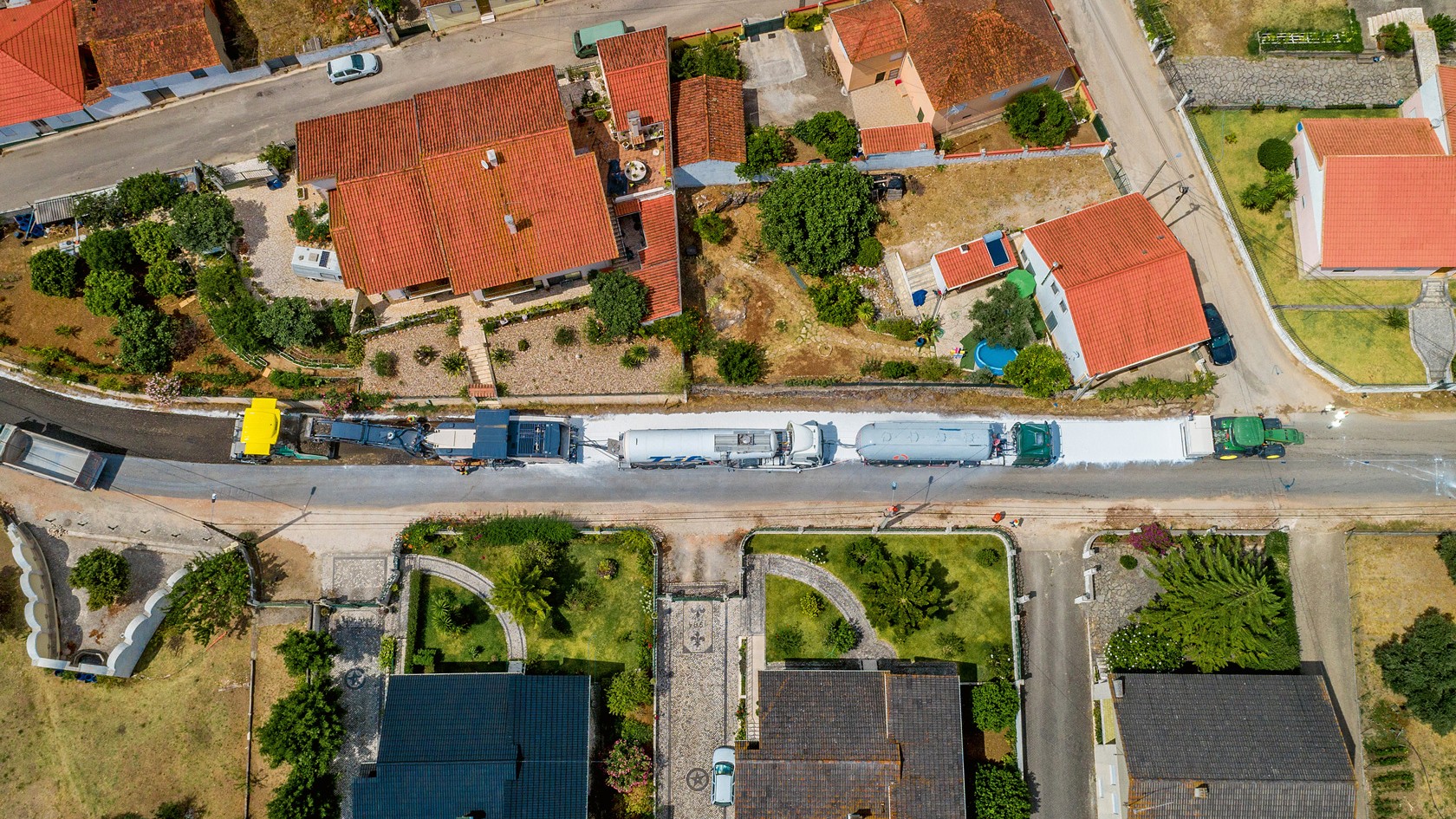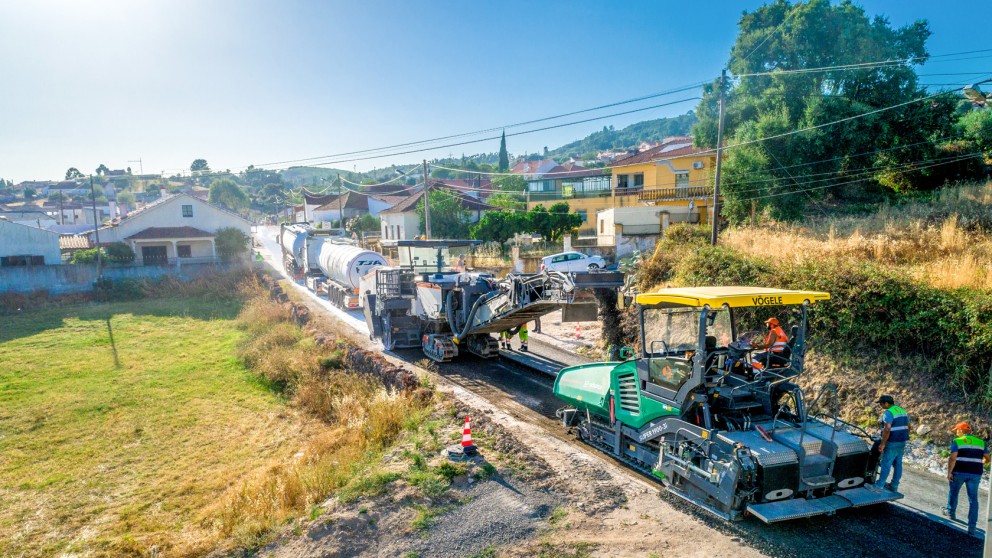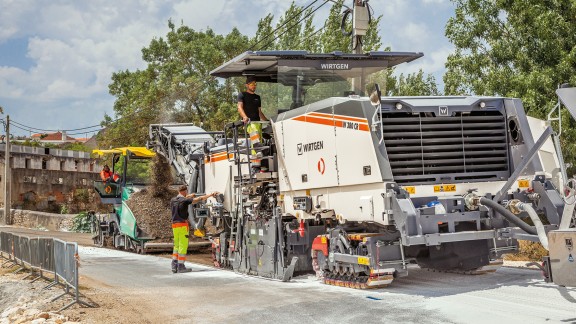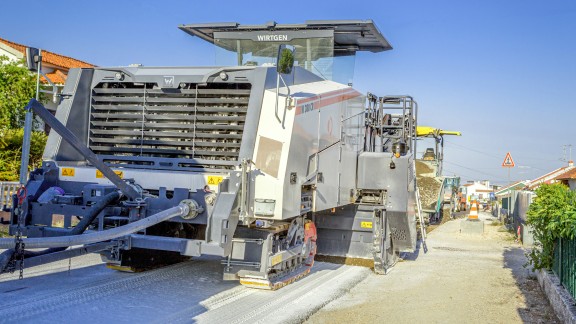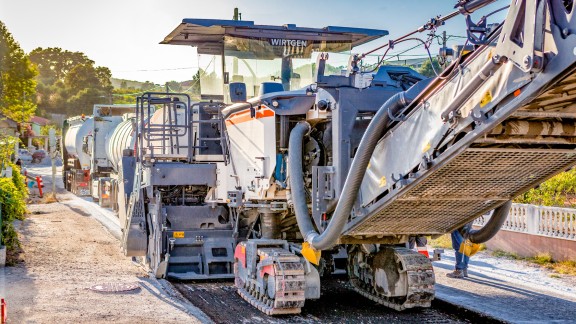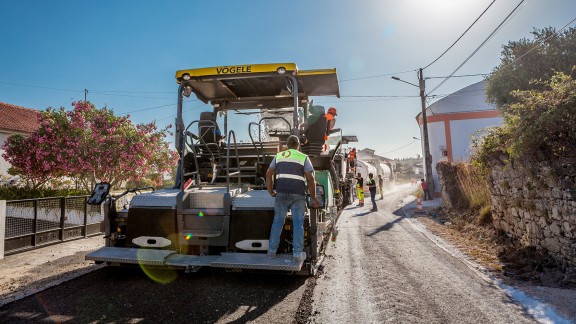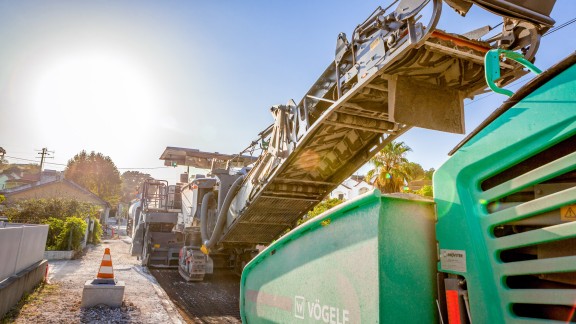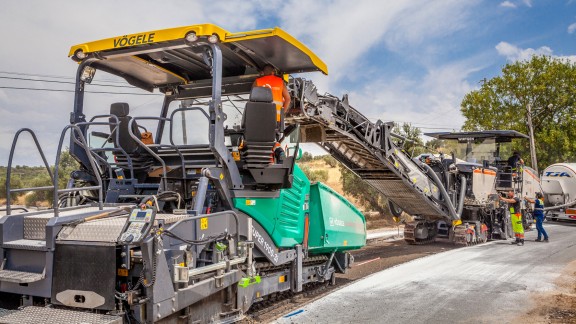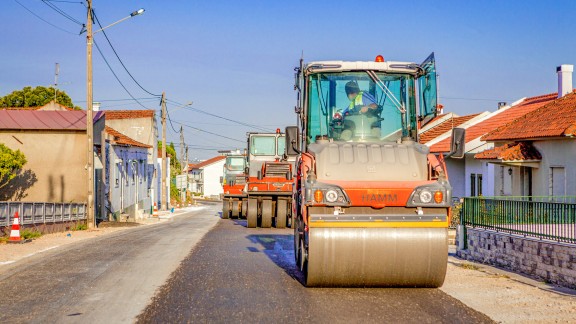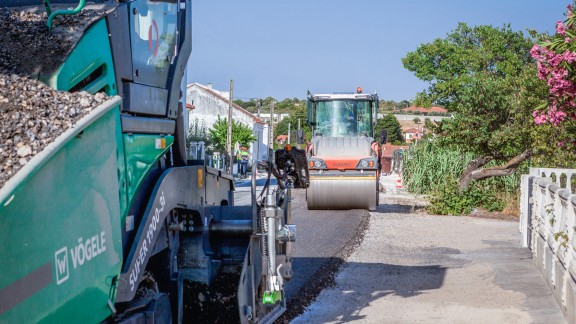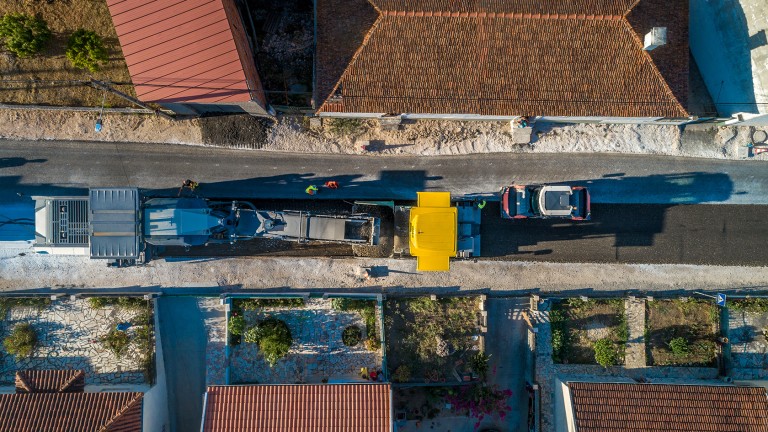- The construction site:
- Monsanto, Portugal
- Surface area rehabilitated:
- Approx. 13,000 m²
- Recycling depth:
- 15 - 17 cm
- CR 380 working width:
- 3,2 m
- Quantity of lime pre-spread:
- 7 kg/m²
- Foamed bitumen added:
- 2,6 % = ca. 140 kg/min
- Working speed:
- 5 m/min
- BSM production:
- 320 t/h
- Daily output:
- 4.000 m²
